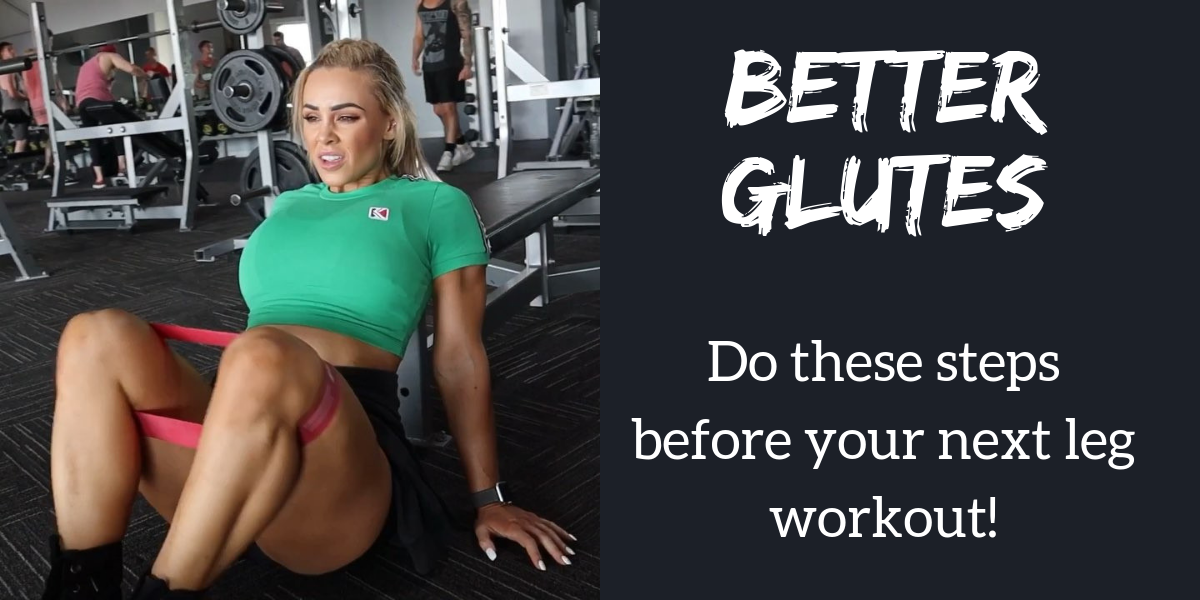If you want to know the very best exercises for growing bigger, stronger, and wider lats, then you want to read this article.
ILS is an incredibly common condition affecting more gym goers than you even realize. In fact, you might have ILS, yet not even realize it.
Worried yet?
You should be because ILS isn’t something to be taken lightly.
ILS stands for “imaginary lat syndrome”, and it typically stems from a lifter not performing their lat-focused back exercises properly, or doing way too much bench pressing and curling as well as neglecting pulling work in their training
In this article, we’ll tell you how to make the most out of your lat exercises and give you five of our favorite exercises for growing bigger lats and developing an impressive V-taper.
If you’ve struggled to this point to develop your lats, don’t worry, you’re not alone. Most lifters have difficulty “feeling” them during any type of back exercise.
All of that ends today.
So, let’s get started with an overview of what the lats are and what their function is.
Lat Anatomy 101
In order to know what are the best exercises to perform to develop bigger, stronger lats, it helps to understand what their form and function are in the body.
The lats (“latissimus dorsi”) are the single largest muscle group in the entire body. Large, flat, and fan-shaped, the lats originate on the spine and inserts into the upper arm (humerus).
In terms of function, the lats are involved in extension, adduction, horizontal abduction, flexion from an extended position, and internal rotation of the shoulder joint. They’re also involved in scapular depression where they oppose the elevating actions on the scapula by the upper traps and levator scapula.
Now, let's get onto our list of five great exercises to help grow bigger lats!
The 5 Best Exercises for Growing Bigger Lats
Pull Ups
Simply put, if you want wide lats, you need to get proficient with chin ups and pulls ups.
The main difference between chin ups and pull ups comes down to the orientation of your palms. Chin ups use a supinated (palms facing you) grip, while pull-ups use a pronated (palms facing away) grip.
Both variations will stimulate the muscle fibers of the lats, but the wider the grip you use, the more lat activation you’ll get. On the flip side using a closer hand width as well as a supinated grip tends to involve more recruitment of the biceps.
Use a mix of both narrow, wide, supinated, and pronated grips for chin ups and pull ups in your training to hit all aspects of the lats.
Lat Pulldowns
The lat pulldown could be thought of as the “fat man’s pull up” due to the fact that many lifters are unable to perform a bodyweight pull up because they have a poor strength-to-weight ratio and lack the body control and coordination required to perform multiple sets and reps of proper bodyweight pull-ups.
This is why one of the best ways you can get better at pull ups is by losing weight. When you drop body fat, you decrease the amount of load your lats have to pull up to the bar.
Still, even if you are proficient at chin-ups and pull-ups, the lat pulldown deserves a place in your training program to grow bigger lats.
No one will dispute that a steady diet of chin up and pull ups are your best weapons for combatting imaginary lat syndrome, but lat pulldowns allow you to get in some extra vertical pulling volume into your weekly training program.
For example, if you are following an upper lower split, one day could be dedicated to doing chin ups and pull ups while the second upper body session could involve lighter weight, higher rep lat pulldowns.
EMG studies show that a wider grip is preferable to medium or narrow grips for maximizing activation of the lats during the lat pulldown exercise.[1]
However, if you’re someone who struggles to really “feel” the lats working when performing any kind of back exercise, you may opt for performing them one arm at a time, as the unilateral version of the lat pulldown allows you to really focus on driving your elbow down and back and establishing a rock-solid mind-muscle connection.
Straight-Arm Pulldowns
While the lat pulldown and pull up will comprise the majority of your lat training, we’d be remiss if we didn’t discuss another variation of the pull down -- the straight-arm pulldown.
They serve as a great activation exercise at the start of your workout ahead of weighted pull-ups or as a great “finisher” towards the end of your workouts when you really want to burn the lats to a crisp.
What makes the straight-arm pulldown such a great lat mass builder?
As you know, one of the primary functions of the lats is to bring the upper arm down and back, which is exactly what you're doing throughout this movement. The straight-arm pulldown allows you to keep your elbows locked tight to the sides of your body while getting the upper arm to pass behind your body into extension, allowing for maximum contraction of the lat muscle fibers.
The straight-arm pulldown also trains the lats in a manner similar to how they function in a deadlift. So, not only does this exercise help you grow bigger and stronger lats, but it also provides great carryover to improving your deadlift performance.
1-Arm Dumbbell Row
The single-arm dumbbell row is one of the staple back exercises, athletes use to increase mass and strength.
It’s also one of the most commonly butchered exercises performed by gym-goers around the world.
Typically, when you see an individual perform a 1-arm dumbbell row, they pull the dumbbell up and into their armpit.
Note, this is not the way to perform the dumbbell row if you want to build bigger lats.
The problem with drawing the dumbbell to your shoulder is that it works the bicep, traps, and rear delts a hell of a lot more than the lats.
In order to make the one-arm dumbbell row more of a true lat exercise, we need to get longer. By that, we mean that you need to increase the range of motion your arms go through during the exercise. Instead of a short, choppy, up and down motion of the dumbbell, you want a longer, sweeping motion, where the dumbbell begins out in front of your shoulder and ends back by your hip with the elbow behind the body.
Remember to initiate the movement with your elbows, not your biceps. Doing so turns the exercise more into a hammer curl than a true dumbbell row.
1-Arm High-Cable Row
Chances are, you’ve never performed the 1-arm cable high row.
Unilateral exercises are also great for addressing size and strength discrepancies that can develop between your stronger and weaker sides.
What makes the one-arm high cable row such a great lat exercise is that unlike many of other back exercises, this high cable row has you begin with the arm extended up and out in front of your torso, providing a good stretch at the start.
Because of the great stretch, you can take advantage of the stretch reflex which increases strength output in the exercise.
You also have a greater range of motion on this exercise because you have the ability to go through this eccentric range of motion where the arm is pulled up and in front of the body. And, you can even train beyond failure by using the 2 up-1 down protocol where you use an assist by the non-working arm on the concentric phase of the lift one you reach concentric failure using only the working arm, then control the lowering (eccentric) phase with just the working arm.
Wide Back Workout
| Exercise | Sets | Reps |
| Weighted Pull Ups | 3 | 6-8 |
| 1-Arm Dumbbell Row | 3 | 8-10 / arm |
| 1-Arm High Cable Row | 3 | 10-12 / arm |
| Straight-Arm Pulldown | 3 | 12-15 |
| Lat Pulldown* | 1 | 100 |
*Note: Choose a weight that's roughly your 20-rep max. Set a timer and start knocking out reps. When you feel that you may fail on the next rep, stop. Take a few deep breaths and rest briefly, then get back after it.
Keep performing lat pulldowns using this rest-pause method until your complete 100 reps. When you finish your final rep, stop the clock. Your goal next workout is to beat that time.
What About Supplements?
Make no mistake, you can build a massive set of wings without any supplements whatsoever. That’s because supplements are not responsible for building muscle and losing fat. Your consistency, commitment, and dedication to your training and nutrition are what get you the results you want.
That being said, supplements can help you recover quicker, train harder, and aid you in meeting your nutrition goals.
ISOLIT
Consuming enough protein is paramount to building muscle and recovering from your intense workouts. Yet, many people struggle to consume enough dietary protein for a number of reasons.
To help you satisfy your daily protein requires, we’ve created ISOLIT.
ISOLIT is a 100% pure whey protein isolate delivering 25 grams of high-quality, muscle building protein per serving. ISOLIT is low in calories, carbs, and fat, making it easy to fit into any diet or nutrition plan.
We’ve also included a comprehensive digestive enzyme blend, featuring HemiSEB, to improve digestibility and nutrient absorption.
Ape Sh*t Untamed
For muscles to grow, they have to be pushed past the point of comfort and forced to lift more weight for more reps and sets than they have previously. To help you push harder in your workouts and get more work down, Primeval Labs has developed the premier high-energy, high-performance pre workout in Ape Sh*t Untamed.
Mega Pre Black contains a synergistic matrix of energizers, focus aids, and performance-boosters to help you train harder and last longer in your workouts.
EAA Sleep
Sleep is crucial to your ability to recover fully from your workouts as well as to perform at a high level in your training. Unfortunately, in today’s society that’s inundated by blue light on all fronts, we’re getting less sleep than ever.
EAA Sleep is an all-natural nighttime recovery and sleep formula to help quiet the mind, lull you into a state of deep relaxation, and set the stage for a productive night’s rest.
In addition to proven sleep aids, such as melatonin and l-theanine, EAA Sleep also contains a comprehensive mix of essential amino acids to support the body’s natural recovery and growth mechanisms while you rest.
References
- Andersen, V., Fimland, M. S., Wiik, E., Skoglund, A., & Saeterbakken, A. H. (2014). Effects of grip width on muscle strength and activation in the lat pull-down. Journal of Strength and Conditioning Research, 28(4), 1135–1142. https://doi.org/10.1097/JSC.0000000000000232









Leave a comment
This site is protected by hCaptcha and the hCaptcha Privacy Policy and Terms of Service apply.